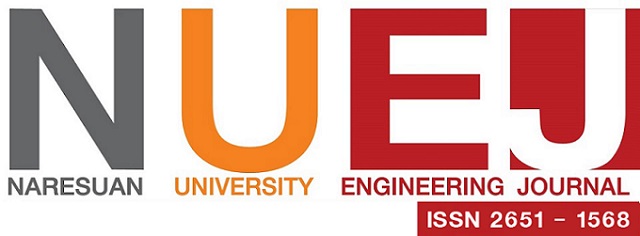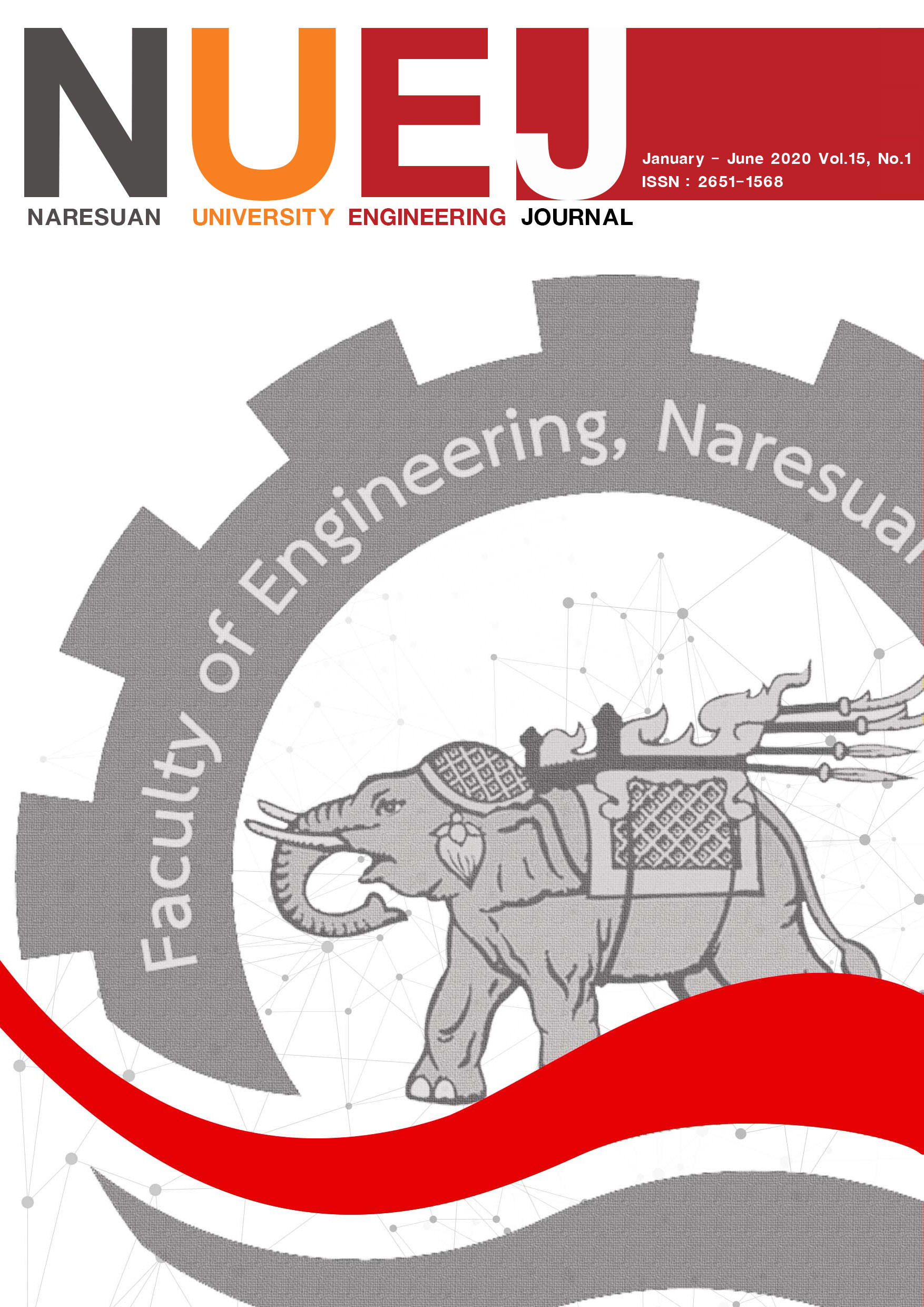การประเมินความสัมพันธ์ของประสิทธิภาพการเบรก คุณสมบัติผ้าเบรก และตัวแปรในกระบวนการอัดขึ้นรูปพิมพ์ร้อน ด้วยเทคนิคการกระจายหน้าที่เชิงคุณภาพ
Main Article Content
บทคัดย่อ
อุตสาหกรรมการผลิตผ้าเบรกมีการแข่งขันกันมากขึ้น โดยเฉพาะในด้านของคุณภาพ ประสิทธิภาพการเบรกจะถูกออกแบบให้ตอบสนองความต้องการของลูกค้า แต่ในการทดสอบประสิทธิภาพนั้นมีความยากในการทดสอบและมีค่าใช้จ่ายสูง คุณภาพของผ้าเบรกจึงถูกคุมควบโดยการทดสอบคุณสมบัติทางกายภาพของผ้าเบรกทดแทน ซึ่งในกระบวนการผลิต กระบวนการอัดขึ้นรูปพิมพ์ร้อนเป็นกระบวนการที่สำคัญที่สุด เนื่องจากส่งผลกระทบโดยตรงกับคุณสมบัติทางกายภาพและประสิทธิภาพของการเบรก จากการศึกษาบริษัทตัวอย่าง พบว่ามีสูตรเคมี B เป็นสูตรที่มีมูลค่าสูง มีการผลิตมาก พบของเสียในกระบวนการผลิตต่ำ แต่เกิดการร้องเรียนจากลูกค้าสูง ซึ่งคาดว่าเกิดจากการควบคุมการผลิตและการตรวจพบที่ยังไม่ครอบคลุม จุดประสงค์ของการศึกษานี้จึงเป็นการใช้เทคนิคการกระจายหน้าที่เชิงคุณภาพ เพื่อประเมินความสัมพันธ์ของประสิทธิภาพการเบรก คุณสมบัติของผ้าเบรก และตัวแปรในกระบวนการอัดขึ้นรูปพิมพ์ร้อน เพื่อเป็นแนวทางการพัฒนาควบคุมการผลิต จากการศึกษาทำให้ทราบว่าสูตรเคมี B ถูกออกแบบประสิทธิภาพโดยเน้นความสามารถในการเบรกสูง มีตัวแปรสำคัญ จำนวน 5 ตัวในกระบวนการอัดขึ้นรูปพิมพ์ร้อนได้แก่ แรงอัด อุณหภูมิ เวลา จำนวนครั้งในการกด และระยะยกแม่พิมพ์ ซึ่งตัวแปรทั้ง 5 ตัวแปรส่งผลกระทบอย่างมากต่อคุณสมบัติของผ้าเบรกและประสิทธิภาพการเบรก จากการคำนวณค่าสัดส่วนความสำคัญแต่ละตัวแปรโดยเทคนิคการกระจายหน้าที่เชิงคุณภาพพบว่ามีค่าสัดส่วนความสำคัญแต่ละตัวแปรอยู่ที่ 15%
Article Details
References
Almannai, B., Greenough, R., & Kay, J. (2008). A decision support tool based on QFD and FMEA for the selection of manufacturing automation technologies. Robotics and Computer-Integrated Manufacturing, 24(4), 501-507.
Chiraboonthanandom, S. (2008). Application of QFD and PFMEA Techniques for Design and Trial Production of Automotive Condensers [Master’s thesis]. Chulalongkorn University.
GSB Research. (2018). Automotive industry. https://www.gsb.or.th/getattachment/07c2aa6e-9bc2-4682-8a9e-90b057178223/motor_61_62.aspx
Hemso, W. (2013). Defect Reduction from Brake Pads Production by Using DMAIC Method [Master’s thesis]. Rajamangala University of Technology Thanyaburi.
ISO. (2008). ISO 15484 In Road vehicles – Brake lining Friction materials – Product definition and quality assurance. https://www.iso.org/standard/37538.html
Korayem, M. H., & Iravani, A. (2008). Improvement of 3P and 6R mechanical robots reliability and qualily applying FMEA and QFD approaches. Robotics and Computer-Integrated Manufacturing, 24(3), 472-487.
Kosbe, P., & More, C. (2010). Performance of NAO Friction Material for Disc Brake. National Journal on Advances in Building Sciences and Mechanics, 1(2), 1-5.
Ministry of Industry. (2010). National Industrial Development Master Plan 2012-2031. http://www.oie.go.th/assets/portals/1/fileups/2/files/Industrial%20Master%20Plan/National_Industrial_Development_Master_Plan.pdf
Nicholson,G. (1995). 100 years of brake linings & clutch facings. P&W Price Enterprises.
Sanguansai, H. (2007). Quaility Improvement and Montoring in House Building Process Applying the Concepts of QFD and FMEA [Master’s thesis]. Chulalongkorn University, Bangkok.
Srimai, N., Sinthavalai, R., Suthmmanon, S., & Auckara-aree, K. (2019). Development of Rubber Metal Glue for Using in an Automotive Industry by Quality Function Deployment Technique. The Industrial Engineering Network Journal, 5(2), 46-54.
Tiantong, M. (2005). Delphi Techniques. In Statistics and research methodology for information technology. King Mongkut's University of Technology North Bankok.
Wilairat, T., Saechin, N., Buggakupta, W., & Sujaridworakun, P. (2018). Effects of Hot Molding Parameters on Physical and Mechanical Properties of Brake Pads. Key Engineering Materials, 824, 59-66.

